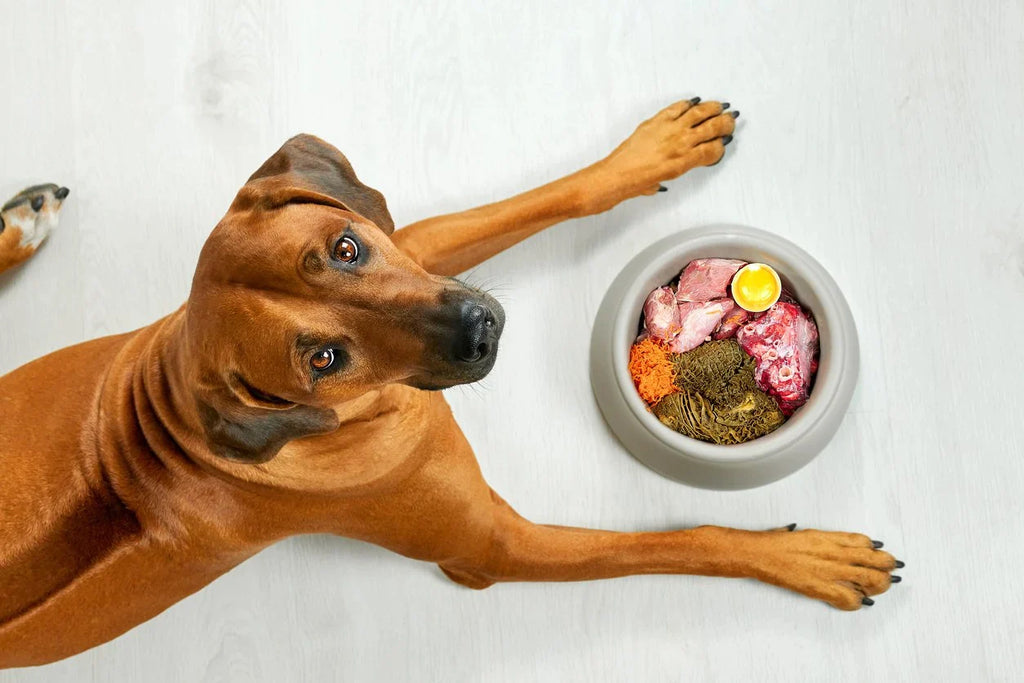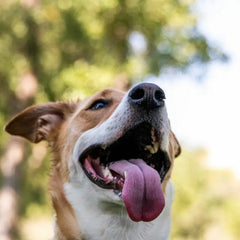In recent years, the raw food diet for dogs has gained considerable attention in the UK. But the question remains – is it safe for your furry friend? This guide delves into the specifics of a raw food diet, its potential benefits, and the associated risks, providing a holistic view of this feeding approach.
What is a Raw Food Diet?
A raw food diet, often referred to as Biologically Appropriate Raw Food (BARF), entails feeding your dog uncooked meat, bones, fruits, vegetables, and other naturally sourced ingredients.
Core Components
- Muscle Meat: Often served on the bone or boneless.
- Organ Meats: Such as livers and kidneys.
- Bones: Both whole or ground.
- Vegetables and Fruits: Including apples, carrots, and spinach.
- Dairy: Such as yogurt and raw eggs.
UK Market Overview
In the UK, there is a burgeoning market for raw dog food, with many brands offering pre-packaged raw meals, making it convenient for pet owners to adopt this diet.
Potential Benefits
Advocates of the raw food diet for dogs highlight several potential benefits that this diet can bring to a dog’s health.
Improved Coat and Skin
- Shinier Coat: Many dog owners have reported a shinier coat.
- Healthier Skin: A diet rich in natural oils and nutrients can promote healthier skin.
Enhanced Digestive Health
- Less Odour: Raw diets can result in less odour in stools.
- Better Digestion: The natural enzymes in raw foods can facilitate better digestion.
Risks and Controversies
Despite the benefits, there are several risks and controversies associated with a raw food diet for dogs, particularly surrounding nutritional balance and safety.
Nutritional Imbalance
- Deficiency of Nutrients: A homemade raw diet can lead to nutrient deficiencies if not well-balanced.
- Excess of Certain Nutrients: Too much of certain nutrients can also be harmful.
Bacterial Contamination
- Salmonella and E. Coli: Raw meats can be a breeding ground for harmful bacteria.
- Cross-Contamination: There is a risk of cross-contamination in the kitchen.
Preparing Raw Meals
If you decide to try a raw food diet for your dog, it is crucial to do it right to ensure your pet’s safety and health.
Hygiene
- Clean Utensils: Ensure all utensils are thoroughly cleaned.
- Safe Handling of Meat: Handle meat safely to prevent bacterial contamination.
Balanced Diet
- Variety: Include a variety of foods to ensure a balanced diet.
- Supplements: You might need to add supplements to ensure that your dog is getting all the necessary nutrients.
Consulting Your Vet
Before switching to a raw food diet, it is essential to consult with a veterinary professional to ensure it is the right choice for your dog.
Individual Health Needs
- Existing Health Conditions: Consider any existing health conditions your dog may have.
- Allergies: Be cautious if your dog has any allergies.
Professional Guidance
- Nutritionist Recommendation: A vet can recommend a qualified nutritionist to guide you.
- Regular Check-ups: Schedule regular check-ups to monitor your dog’s health.
FAQs
Q: Are there any ready-made raw food products available in the UK?
A: Yes, there are several brands in the UK offering pre-packaged raw dog food products, such as Naturaw, Nutriment, and Benyfit Natural.
Q: How do I transition my dog to a raw food diet safely?
A: Transition slowly, starting with a small amount of raw food mixed with their current diet, and gradually increasing the raw food portion over a week or more.
Q: Can puppies be fed a raw food diet?
A: While puppies can be fed a raw diet, it is vital to ensure that the diet meets all their nutritional needs, which are different from adult dogs. Consulting a vet is highly recommended.
Conclusion
The raw food diet presents both opportunities and challenges for dog owners in the UK. While it can offer numerous benefits, including improved coat health and better digestion, it is not devoid of risks, primarily nutritional imbalances and bacterial contamination. Proper preparation and handling of raw food, backed by expert guidance from your vet, can mitigate these risks to a large extent. As always, a well-informed decision, tailored to your dog’s individual health needs, is the best approach.




